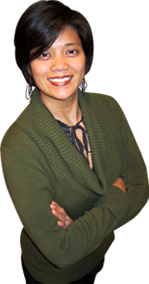I have never really had any major issues with my skin, but 8 months after I gave birth to my little one, I began to experience itchiness, dryness and redness on my eye lids and around my eyes. I
Sheryl C.,South San Francisco
HOW TO THRIVE THE LUNAR NEW YEAR: BALANCING OUR YIN & YANG
February 20, 2013 Category : BlogIf you had a rough start of the New Year last month in January, you still have another chance to reclaim and rejuvenate your mind and body during the year of the Water Snake. Lunar New Year begins February 10, 2013 – January 30th 2014.
The Water Snake is influential and insightful. They are motivated and intellectual. In health, snakes become easily agitated and stressed. They have to avoid hectic schedules and noisy settings. They need calm and quiet in order to thrive and succeed. A snake needs sleep and relaxation in order to live a long and healthy life.
Many of us are like the snake. We are influential, insightful, motivated, and intellectual. On the other hand, we can also become easily agitated and stressed from our busy day-to-day life of hard work, commitment, and responsibility.
How can we obtain the calm and quiet in order to thrive and succeed for this year in 2013? One way is to practice balance. Understanding Yin-Yang theory can help us find balance and harmony within and with others.
Often times, we refer to Yin and Yang when it comes to relationships. Yin and Yang is the single most important concept in acupuncture and Chinese medicine. It is vital to understanding how acupuncture differs from Western medicine. For acupuncturists, it is the foundation of our work – to bring about balance through harmonizing Yin and Yang concurrently.
What is Yin and Yang?
Yin-Yang theory defines a relationship of opposing forces that are interconnected together in nature. In actuality, they are complementary forces that create a balanced whole. For example, water is Yin relative to steam – which is Yang; but water can also be Yang relative to ice – which is Yin. To name a few:
Yin is cold, quiet, contracting, dark, and weak. Additionally, yin represents an introverted, soft-spoken, and contemplative person.
Yang is hot, active, dispersing, bright, robust and strong. Additionally, yang represents an extroverted, loud-spoken or chatty, and expressive person.
The Basic Principles of Yin and Yang
Applying the theories of Yin and Yang can help address or resolve some of the challenges we face within ourselves and in our relationship to others.
Everything has a Yin and Yang aspect.
For each of us, women are considered Yin, and men are considered Yang. Yin is night and Yang is day. Yin is considered the fall and winter seasons and Yang is the spring and summer seasons. Although these concepts may be considered opposites, they are actually relative aspects of the same thing.
Yin and Yang are interdependent. They cannot exist without each other.
Although Yin and Yang are considered opposites of each other, they are mutually dependent. This means the existence of Yin qualities depends on the existence of Yang qualities, and vice versa. Not one thing or person can be totally Yin or Yang.
Here is an example. John works 60 hours a week and has difficulty sleeping (Yang). As a result, he is exhausted and catches a cold or flu quite easily (Yin). To keep up with the stress of his demanding job (Yang), he must create ways to relax, sleep, and rest (Yin).
Yin and Yang create each other. They are inherent in everything we do.
Yin and Yang transform and balance each other.
In Chinese medicine, Yin and Yang are in a constant state of change so that when one increases the other is consumed, to preserve the balance. Yin and Yang are constantly transforming into one another. A woman is considered Yin relative to her male partner who is Yang. But she also has a Yang aspect. Every person has both a Yin and Yang aspect. An example of this is seen in day (Yang) and night (Yin). As the day comes to an end, Yang decreases and Yin increases. In the seasons, when Spring comes in, Yin begins to decrease and Yang increases.
In another example, excessive work (Yang) without rest induces fatigue (Yin). Excessive consumption of alcohol creates a pleasant euphoria (Yang) which is quickly followed by a hang-over (Yin). Excessive worrying (Yang) depletes the energy of the body (Yin).
The balance in our life of diet, exercise, work, emotional and sexual life is the essence of prevention in Chinese medicine. An understanding of how Yang can turn into Yin and vice versa can help us create balance to our physical and emotional health.
For 2013 and Valentine’s Day, give the gift of helping your loved ones understand Yin-Yang theory. Change is inevitable. Yin and Yang exists in everything we do. Transformative change will take place for those who embrace it.
LIKE THIS ARTICLE? Sign up for our free updates from Diwa by clicking here!


